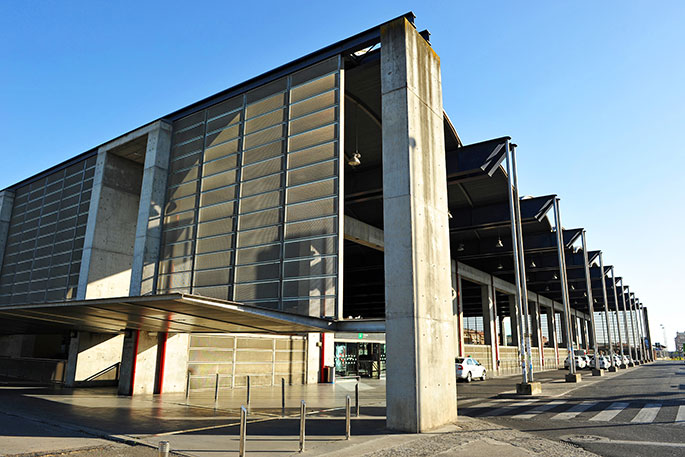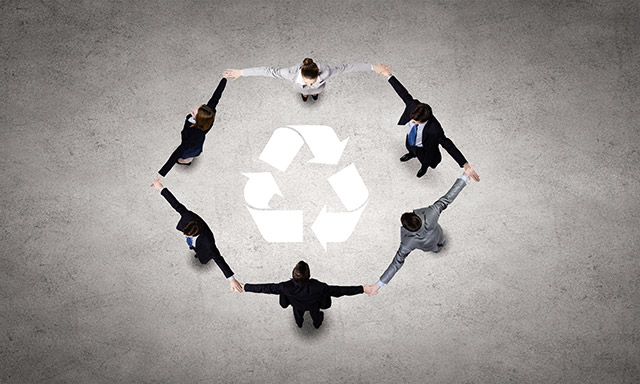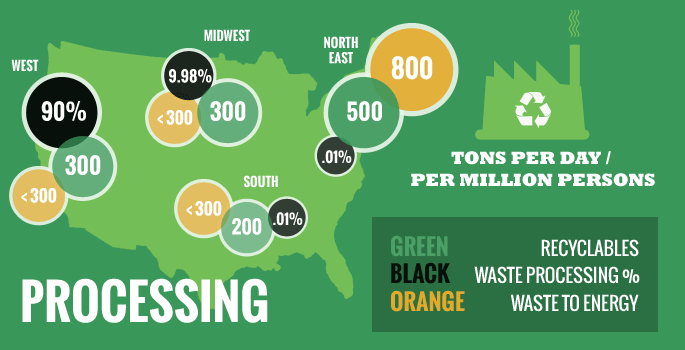
Going green not only can improve your profits, but it can also improve your public image. Unfortunately every business claims to be environmentally responsible and smart consumers want proof of an organization’s true nature. LEED certification allows your business to get credit for everything from using low-emission materials to green power to deploying bins for recycling.
LEED 101
LEED (Leadership in Energy and Environmental Design) was developed by the U.S. Green Building Council. The program evaluates organizations and assigns them points for environmental initiatives. Earn enough green building points to become LEED Certified and you can display the logo to prove to customers, vendors or any other interested party that you are serious about the environment. Higher scores earn better certifications, culminating in the coveted Platinum certification. Providing a dedicated area to house bins for recycling is one way to earn a few points for your score.
LEED is not only a U.S. program. The Canada Green Building Council has published a version of LEED for organizations in that country, meaning organizations putting recycling bins in Toronto, Montreal, Vancouver or anywhere else in the country can get credit for it.
What Do You Need for the LEED Certification Process?
A full examination of LEED requirements and how to earn LEED points is beyond the means of a single blog post but let’s look at the one area we are familiar with: bins for recycling. The guidelines are simply that an organization must have a dedicated area for collecting materials, and the business must collect at a minimum paper, corrugated cardboard, glass, plastics and metals. Your recycling contractor may accept co-mingled recycling but it’s also easy to place multi-slot containers to make it easy for workers to toss each recyclable into an appropriate stream.
LEED does not require a certain square footage for your recycling area, only that it be a dedicated space. However they do recommend minimum recycling areas based on the building area. They suggest at least 82 square feet for small facilities up to 500 square feet for huge facilities.
Optional Extras
As you can see it’s easy to satisfy the minimums but we recommend you invest a little more to get the most from your recycling program. After all, it’s not just about the LEED points. You need a dedicated space but that doesn’t mean you should force everyone to trek across the building to drop off their recycling. Place bins for recycling in break rooms, near snack machines, at building exits or in any other high traffic area.
Develop a recycling plan. Educate employees about what can and can’t be recycled. Set collection goals to help you evaluate the plan’s success. Consider expanding collections beyond what LEED requires–for example, businesses generate a lot of electronic waste so make it easy for workers to recycle old equipment.
To be fair, you won’t earn many points by simply putting out a couple of bins for recycling. However, when it is part of a larger plan for how to earn LEED points, those extra points might just push you to a new certification level.




































































































































 3 Pitfalls that kill Corporate Sustainability & Climate Change Initiatives
3 Pitfalls that kill Corporate Sustainability & Climate Change Initiatives  Why Should Businesses Recycle?
Why Should Businesses Recycle?  Geographical Trends In Recycling
Geographical Trends In Recycling 
